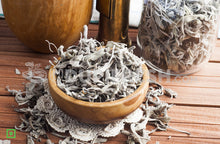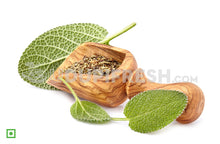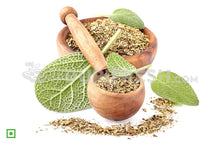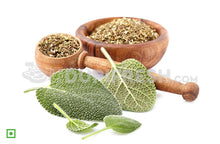Sage is an herb. The leaf is used to make medicine.
Sage is used for digestive problems, including loss of appetite, gas (flatulence), stomach pain (gastritis), diarrhea, bloating, and heartburn. It is also used for reducing overproduction of perspiration and saliva; and for depression, memory loss, and Alzheimer's disease.
Women use sage for painful menstrual periods, to correct excessive milk flow during nursing, and to reduce hot flashes during menopause.
Sage is applied directly to the skin for cold sores; gum disease (gingivitis); sore mouth, throat or tongue; and swollen, painful nasal passages.
Some people inhale sage for asthma.
In foods, sage is used as a commonly used spice.
In manufacturing, sage is used as a fragrance component in soaps and cosmetics.
USES & EFFECTIVENESS
Possibly Effective for...
- Alzheimer's disease. Taking extracts of two different sage species (Salvia officinalis and Salvia lavandulaefolia) for 4 months seems to improve learning, memory and information processing in people with mild to moderate Alzheimer's disease.
- Mental performance. Taking a single dose of common sage (Salvia officinalis) or Spanish sage (Salvia lavandulaefolia) by mouth seems to improve memory, alertness, and attention in healthy adults. When used as aromatherapy, these sage species seem to improve alertness, but not attention and memory.
- Cold sores, when applied as a cream containing sage and rhubarb. Applying a cream containing common sage (Salvia officinalis) and rhubarb (Rheum officinale and Rheum palmatum) to cold sores may be about as effective as acyclovir (Zovirax) cream. Acyclovir cream heals the cold sores in about 6 days; it takes the sage and rhubarb cream about 7 days to heal them. Sage and rhubarb together work faster than sage alone.
- High cholesterol. Taking common sage (Salvia officinalis) three times per day for 2 months seems to reduce “bad” low-density lipoprotein (LDL) cholesterol and blood fats called triglycerides, and increase “good” high-density lipoprotein (HDL) cholesterol, in people with high cholesterol.
- Memory. Taking a single dose of common sage (Salvia officinalis) or Spanish sage (Salvia lavandulaefolia) by mouth seems to improve memory in healthy adults. However, these sage species do not seem to improve memory when used as aromatherapy.
- Menopausal symptoms. Early research suggests that taking extract of common sage (Sage Menopause, Bioforce AG) for 8 weeks improves symptoms of menopause, especially hot flashes. Also, other developing research suggests that taking a combination of common sage (Salvia officinalis) and alfalfa extract for 3 months reduces hot flashes and night sweats.
Insufficient Evidence to Rate Effectiveness for...
Lung cancer. People who regularly use sage as a spice seem to have a 54% lower chance of developing lung cancer compared to those who don't use sage.
- Sore throat. Using a specific spray containing 15% common sage extract (Valverde Salvia Rachenspray) seems to reduce throat pain in people with a sore throat. However, sprays containing higher (30%) and lower (5%) amounts of common sage extract do not seem to reduce throat pain. Other early research suggests that spraying the throat with a specific product containing common sage and echinacea for up to 5 days improves sore throat symptoms similarly to a commonly used drug spray.
- Pain after surgery. Early research suggests that taking common sage (Salvia officinalis) along with the drugs ibuprofen or diclofenac is less effective for reducing pain after surgery compared to using the drug benzydamine hydrochloride. Also, using common sage seems to increase the risk of infections after surgery compared to benzydamine hydrochloride.
- Sunburn. Applying 2% common sage (Salvia officinalis) extract to the skin after UV exposure seems to reduce the development of skin redness.
- Swelling of the tonsils (tonsillitis). Early research suggests that spraying the throat with a specific product containing common sage and echinacea for up to 5 days improves symptoms of tonsillitis similarly to a commonly used drug
- Loss of appetite.
- Stomach pain.
- Dry mouth.
- Painful periods.
- Asthma.
- Diarrhea.
- Gas.
- Bloating.
- Indigestion.
- Excessive sweating.
- Other condition.








